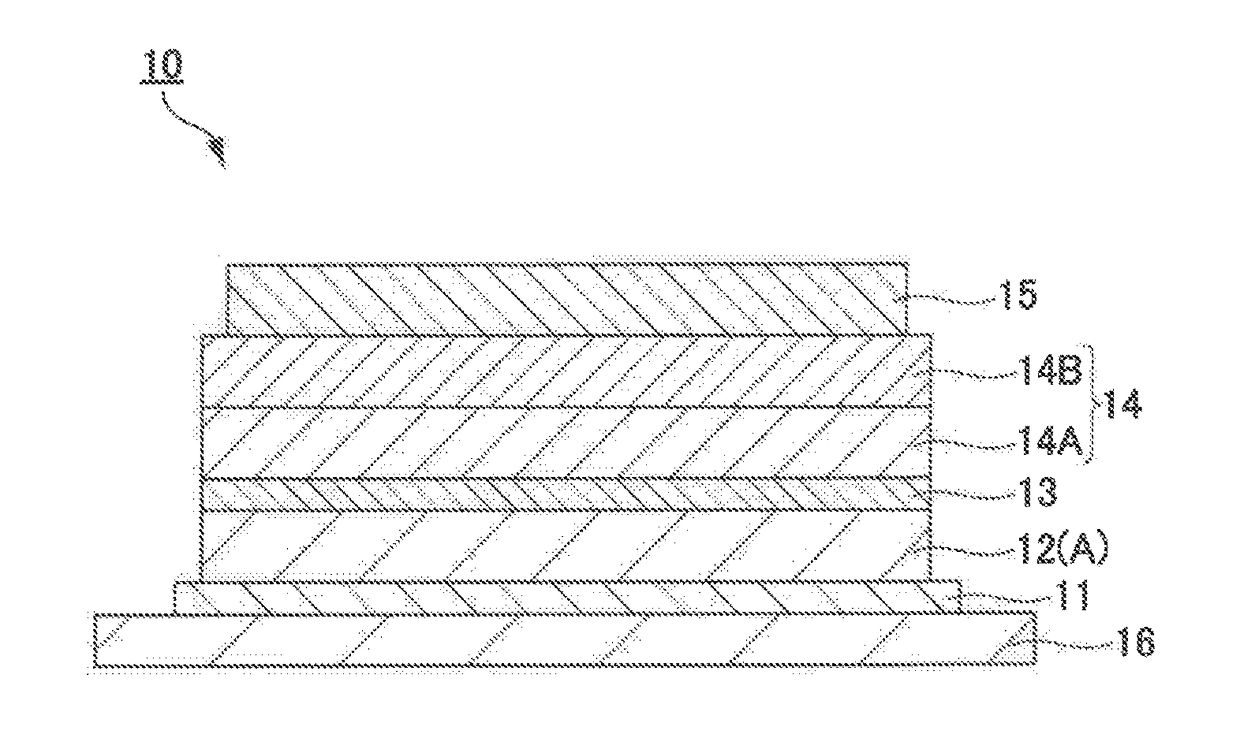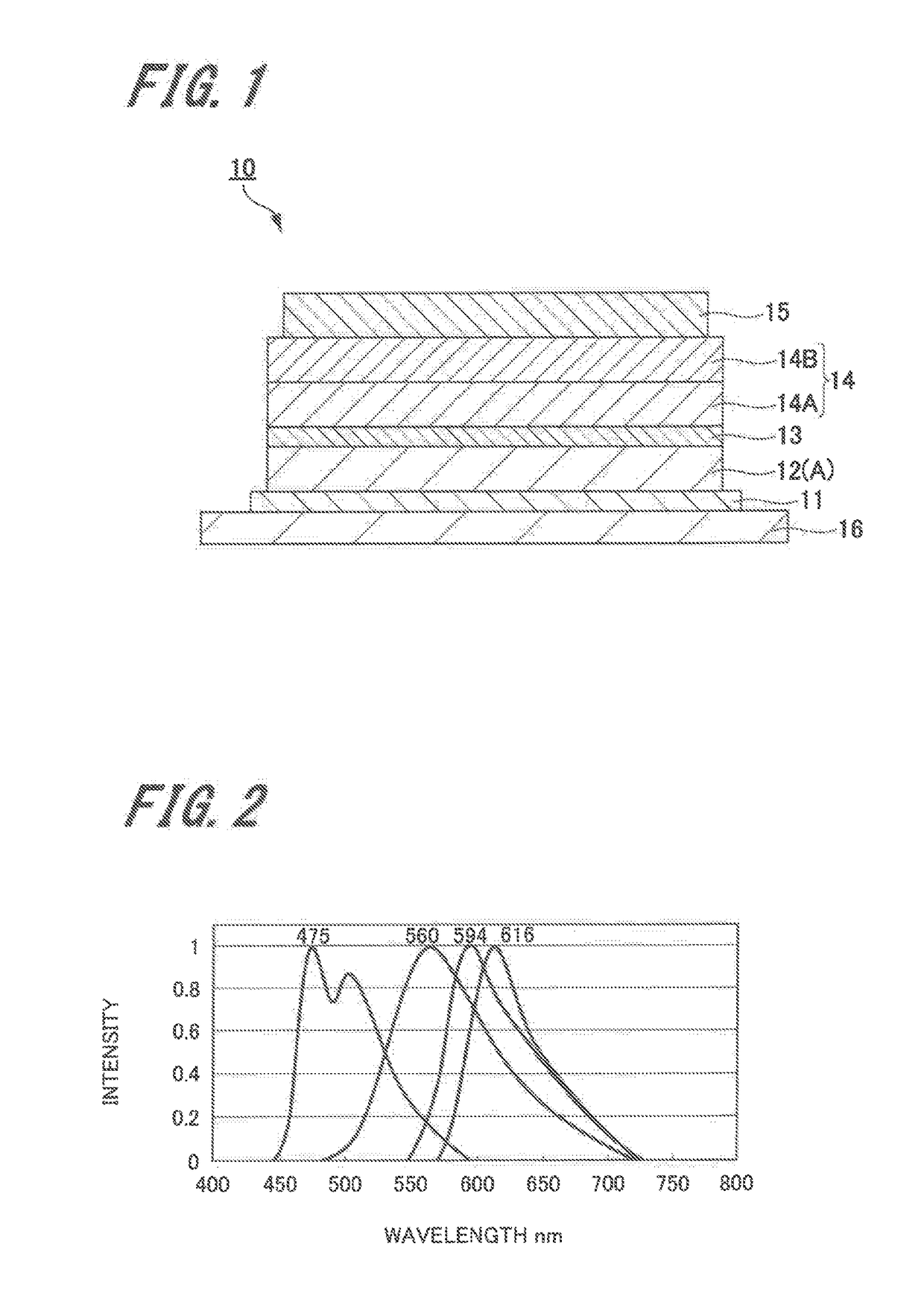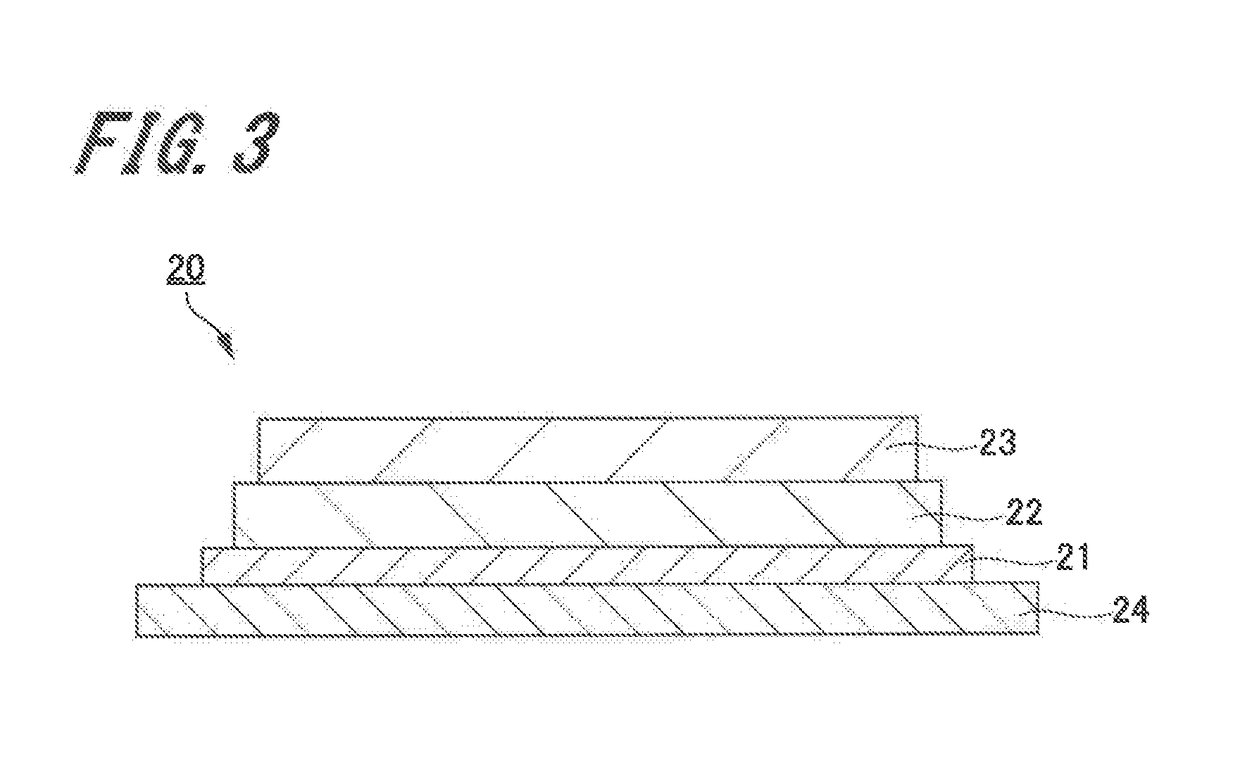Organic electroluminescent element and electronic device
- Summary
- Abstract
- Description
- Claims
- Application Information
AI Technical Summary
Benefits of technology
Problems solved by technology
Method used
Image
Examples
first embodiment
The First Embodiment
[0026]Hereinafter, a specific embodiment of the organic electroluminescent element (organic EL element) of the present invention will be explained. In FIG. 1, the configuration of the organic EL element of the present embodiment is shown.
[0027][Configuration of Organic EL Element]
[0028]An organic EL element 10 shown in FIG. 1 includes an anode 11, a first light-emitting unit 12, an intermediate connector layer 13, a second light-emitting unit 14, and a cathode 15. In addition, each of these layers is laminated and formed on a substrate 16. Details of each of these configurations will be described later.
[0029]In the organic EL element 10, the anode 11 is formed on the substrate 16, and the first light-emitting unit 12 is formed on the anode 11. Furthermore, the intermediate connector layer 13 is formed on the first light-emitting unit 12, and the second light-emitting unit 14 is formed on the intermediate connector layer 13. Moreover, the cathode 15 is formed on t...
second embodiment
[0228]Next, a second embodiment of the organic electroluminescent element (organic EL element) will be explained. In FIG. 3, the configuration of the organic EL element of the second embodiment is shown.
[0229][Configuration of Organic EL Element]
[0230]An organic EL element 20 that is shown in FIG. 3 includes an anode 21, a light-emitting unit 22, and a cathode 23. In addition, each of these layers is laminated and formed on a substrate 24.
[0231]In the organic EL element 20, the anode 21 is formed on the substrate 24, and the light-emitting unit 22 is formed on the anode 21. Furthermore, the cathode 23 is formed on the light-emitting unit 22.
[0232]The organic EL element 20 has a so-called bottom emission type configuration in which the anode 21 is constituted of a transparent electrode and the cathode 23 is made to function as a reflection electrode and light is extracted from the substrate 24 side.
[0233]Furthermore, the organic EL element 20 has at least one or more light-emitting l...
third embodiment
Lighting Device-1
[0243]Next, a lighting device will be explained as an example of an embodiment of electronic devices in which the organic EL elements of the first embodiment and the second embodiment are used.
[0244]An organic EL element used in the lighting device of the present embodiment may be designed so as to impart a resonator structure to the each organic EL element of the configuration of the above-described first embodiment or the second embodiment. The objects of using the organic EL element having the resonator structure include a light source for an optical storage medium, a light source for an electrophotographic copier, a light source for an optical communication processor, a light source for an optical sensor, and the like, but is not limited thereto. Alternatively, the organic EL element may be used for the above-described purpose by oscillating laser beam.
[0245]Note that materials to be used for the organic EL element can be applied to an organic EL element which e...
PUM
 Login to View More
Login to View More Abstract
Description
Claims
Application Information
 Login to View More
Login to View More - R&D Engineer
- R&D Manager
- IP Professional
- Industry Leading Data Capabilities
- Powerful AI technology
- Patent DNA Extraction
Browse by: Latest US Patents, China's latest patents, Technical Efficacy Thesaurus, Application Domain, Technology Topic, Popular Technical Reports.
© 2024 PatSnap. All rights reserved.Legal|Privacy policy|Modern Slavery Act Transparency Statement|Sitemap|About US| Contact US: help@patsnap.com










